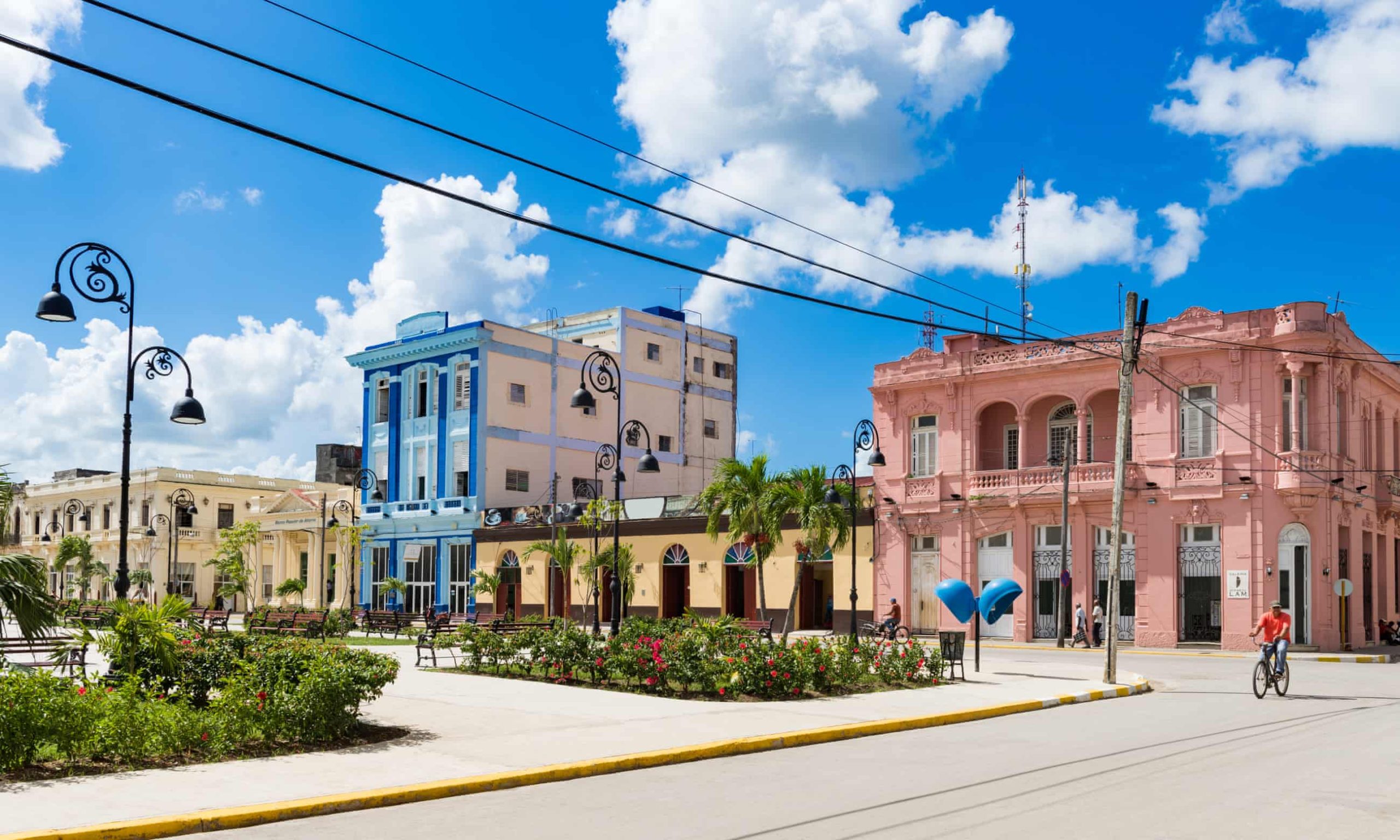
Rundown but beautiful, and with a host of exotic stories to tell, the town is on the rise as new hotels open and renovation gathers pace
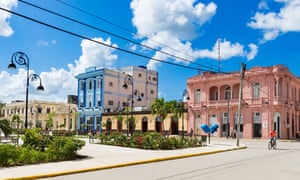
Wandering round the Cuban town of Sagua La Grande is like turning the cobwebbed pages of a forgotten magical realist novel. It has two grandiose churches: the 1860 Purísima Concepción de Sagua la Grande, with frescoes, stained glass and marble, framed by a streets that end in a square dwarfed by 100-year-old yellow flame trees; and the 1908 Iglesia del Sagrado Corazón de Jesús, seat of the banished Jesuits.
This settlement, 15 miles from the north coast of central Villa Clara province, was once prosperous. Sagua’s riches peaked between the first world war and the Great Depression, when its economy, high on mammoth sugar prices, had a scorching moment in the sun. Sagua even had a famous son to immortalise its spirit. Artist Wifredo Lam died in Paris in 1982 but was born here of a Chinese father and a Congolese-Cuban mother. His 1943 painting The Jungle, which hangs in New York’s Museum of Modern Art, is an Afro-Cuban magical depiction of Sagua’s sugar cane.
Those golden days ended when the bottom fell out of the sugar market in the mid-20th century. Its port, Isabela de Sagua, closed and its youth dispersed in untold thousands to the US. Now, only sparrows visit the 1908 Casino Español, where Spanish merchants once caroused.

However, after years of decline, things are changing. The noise of pneumatic drills has been shattering the silence for over a year now. Zones under repair include Sagua’s main shopping street, its museum, art gallery, cinema, ice-cream parlour, cultural centre, restaurants and the supremely dilapidated railway station. Even the Casino Español is earmarked for revival – great news in this city declared a national monument in 2011.
The lavish Hotel Sagua opened in 1925 to great fanfare. Spanish writer Federico García Lorca and Chilean poet Gabriela Mistral both stayed here. After lying derelict for decades, it reopened last year as the 84-room Hotel Encanto Sagua, with a restaurant, pool and rooftop bar. It’s now run by the state brand, Encanto, which has done a decent job of breathing life into period ruins in other parts of Cuba.
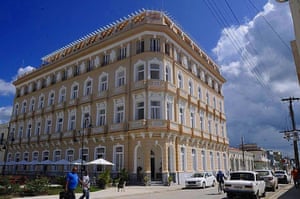
On a walking tour of Sagua with local journalist Carlos Alejandro, we pass the derelict Palacio Arenas, with eclectic styling that blends Moorish and art nouveau. It was once considered one of the seven architectural wonders of Villa Clara province. “Seven sisters of a wealthy family lived here,” Carlos says. “One was a nymphomaniac, so she was banished. Others emigrated. The last died in 1996 and the house became derelict.”
Until now: the 1918-built house opened at the end of last year as the 11-room Hotel E Palacio Arenas, in a style as true to the original as possible, murals and frescoes restored, with a patio and restaurant.
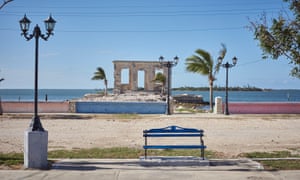
Carlos and his partner Maykel have bought the small, derelict but gorgeous, apartment to which the nymphomaniac sister was banished. Their dream is to do it up and open it as a B&B, which is now possible in Cuba, although a rare entrepreneurial act in Sagua.
Sagua la Grande’s eponymous river runs to Isabela de Sagua on the coast, where steamers once arrived from Louisiana and Florida. Hungry for seafood, we head there, passing fields and buffalo farms. In sugar’s heyday, these were cane fields and, before that, forests full of mahogany and cedar trees that were felled and shipped to Europe. Locals say mahogany and cedar from Sagua line the 16th-century Monasterio del Escorial, the King of Spain’s country seat near Madrid. Our rusty car overtakes a train chugging towards the coast, another remnant from Sagua’s days as a sugar exporter.
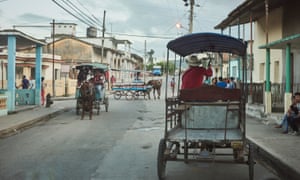
In Isabela, the hurricane-lashed frames of old wooden cottages still stand on stilts over the bay. The harbour foundations are visible in the water. The roofless warehouses were once filled to the rafters with rum and sugar: this was one of Cuba’s busiest ports from 1844, welcoming more than 40 cargo ships a day at its peak. The Customs House, a little out to sea, is still handsome, despite having no windows and barely any walls. In 2017, Hurricane Irma all but wiped Isabela off the map. More than 90% of homes were savagely damaged. An ambitious reconstruction project is under way: by 2020, say the tourism authorities, nearby Cayo Esquivel will have a five-star resort, and Isabela a marina capable of welcoming luxury yachts. A diving centre will be developed on Cayo Cristo.
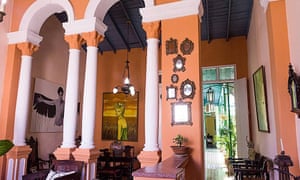
Meanwhile, life as it is now continues. Locals are swimming off the sandy beach. Everyone here is a fisherman. The seafood shacks on stilts over the water, destroyed by the hurricane, are back. At one, La Estrella , we sit on goatskin-covered chairs on a platform over the sea to enjoy consommé, paella, grilled fish, and beer with kermato – a mix of tomato juice and clams – for about $7.
In the afternoon, we head 30 miles south to Santa Clara and check into art-filled Hostal El Artista, opened by thirtysomethings Pavel and Guido, a medic and a visual artist. Cuba has better-looking towns – such as Sagua – but Santa Clara thrums with life. Best-known for the Che Guevara mausoleum and the site of the last battle in the Cuban Revolution in late 1958, Santa Clara today is full of people making art.
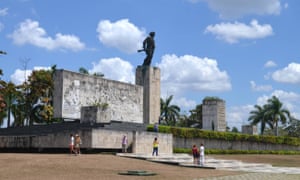
Theatre producer Alejandro Marrero says since Americans were permitted to travel here under the exchanges set up by President Clinton in 1999, he has worked with many US actors, including an elder from the Lakota tribe of Standing Rock.
We carry on to El Mejunje, a roofless bar, LGBT haven and cultural centre, for the trova – popular Cuban songs, with guitar, belted out to a young crowd. It also does drag nights, which sound like a riot: and the bar’s own drag troupe, Mejunje Queens, tour remote villages with their show Yo Me Incluyo (I Include Myself). These macho outposts adore drag. It’s like a Cuban version of Priscilla, Queen of the Desert – another sweet surprise in this province of contradictions.
The Guardian

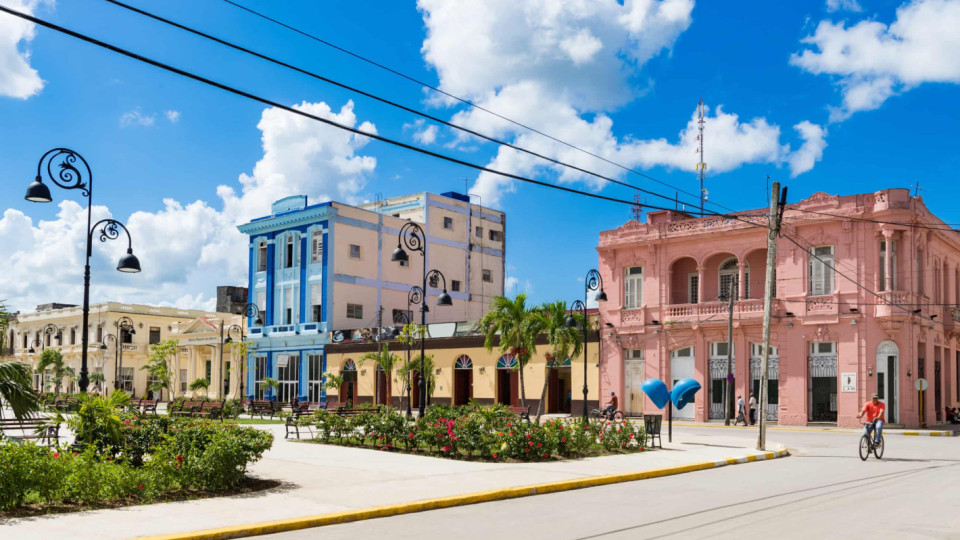
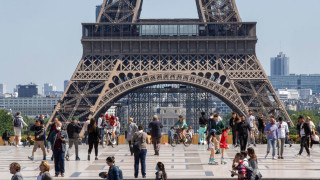





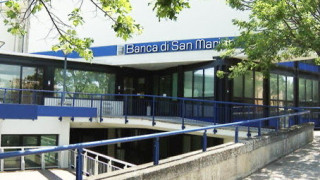
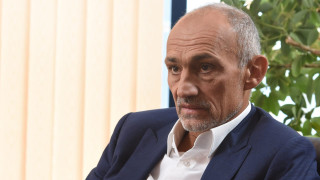

Leave a comment